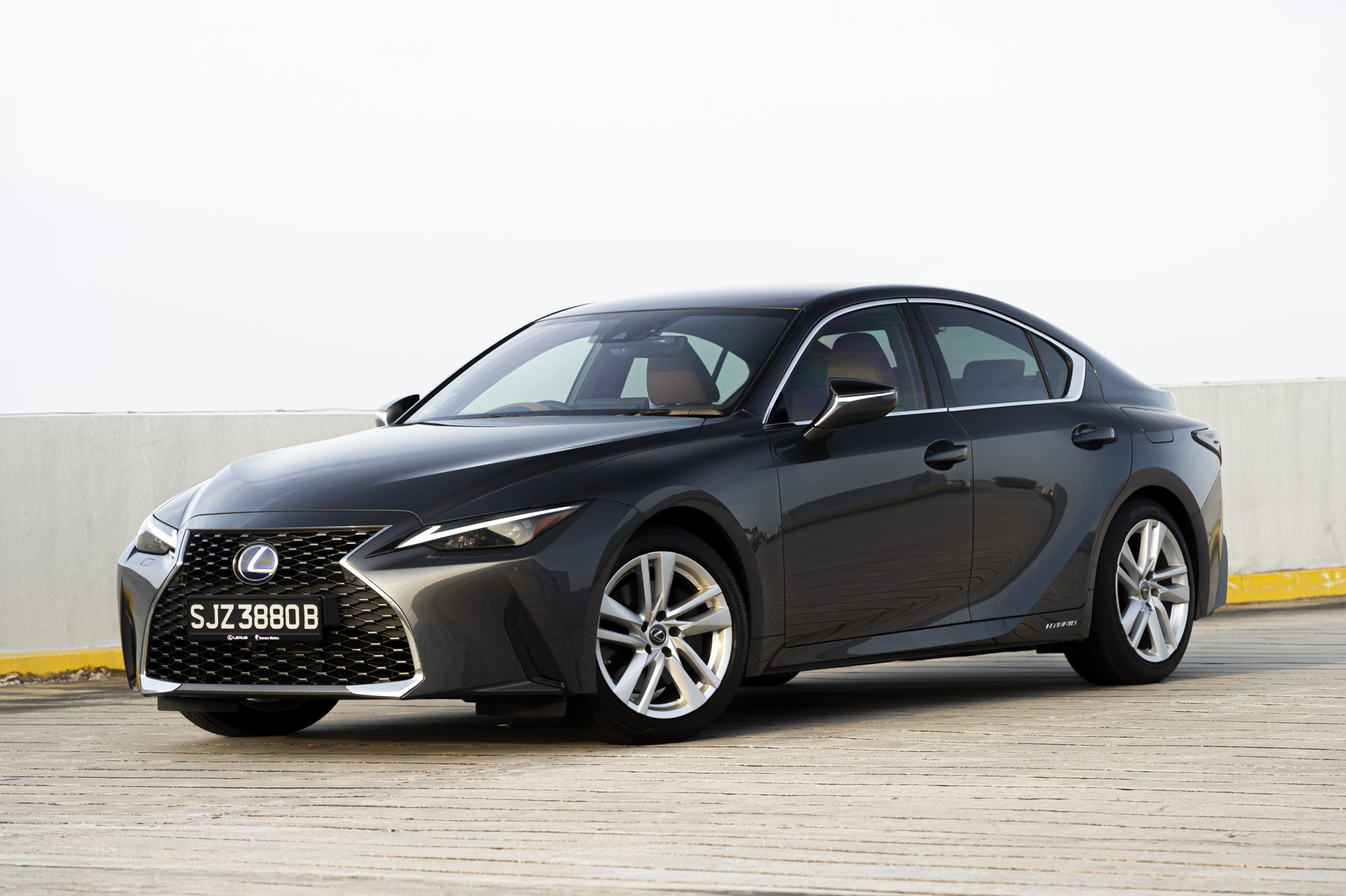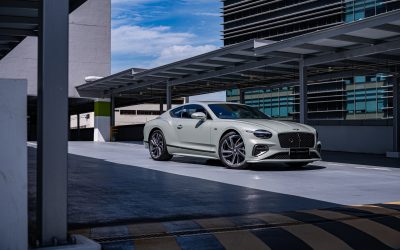The facelifted Lexus IS 300h embodies the hallmark smoothness and refinement the brand is renowned for, with just enough sportiness to make the drive exciting.
It is no secret that the BMW 3 Series has been the compact sports sedan benchmark for many car makers. Lexus is no exception. Their response comes in the form of the IS series.

The first generation Lexus IS ticked all the right boxes in terms of style and substance. It had the right ingredients; rear-wheel drive with an in-line 6-cylinder 2.0-litre engine.
The successive generation gave rise to a more bloated take on the theme and became less desirable as a result.
Facelifted and fitter
The car tested here is a facelifted version of the third generation Lexus IS which sees a return to its sportier roots, along with a more sculpted bodywork, and to this writer’s eyes, better resolved headlight design.
The biggest improvements are perhaps found beneath the sheet metal. In the handling department, the facelifted IS has been through an intensive development programme at the Toyota Technical Centre Shimonyama.
The result is apparent, even behind the wheel of this model, the Lexus IS 300h. As a petrol-electric hybrid, this model prioritises fuel efficiency while performance is left to the other models in the range. The IS 300 is powered by a 2.0-litre turbocharged four-cylinder engine while the range-topping IS 350 has naturally-aspirated 3.5-litre V6 stuffed into its engine bay.

Those looking for the legendary silence, smoothness and comfort that Lexus has traditionally been known for will find it in the IS 300h. The transitions between EV mode and the petrol engine coming into play can barely be felt in moderate driving conditions.
The luxury car impression continues thanks to its rear-wheel drive layout. Even under enthusiastic acceleration, the steering remains wonderfully vibration-free and uncorrupted by any kind of ‘kickback’ that tends to afflict front-wheel drive cars when driven in this manner.
The rear-wheel drive layout comes at the expense of rear legroom however as the high transmission tunnel doesn’t leave the rear passenger in the middle with very much space for their feet. Those looking for more room to stretch out in the back would be better served by the Lexus ES models.

Driving impressions
In a time when nearly every sedan in this segment is powered by a 2.0-litre turbocharged four-cylinder engine, the linear power delivery of the IS 300h is something to be savoured.

The problem with most turbocharged engines is that they tend to make a lot of torque under initial acceleration. While this might make the car feel fast (“Can you feel the power, Sir?”), it can get rather wearisome especially for your less impressed passengers.
The Lexus IS 300h dishes out its power in a predictable linear manner. This way, the driver doesn’t need to modulate the accelerator pedal which results in a smoother ride.

Insider information
Inside, the most noticeable change would be the 10.3-inch centrally-mounted infotainment touchscreen which now features Apple CarPlay and Android Auto as standard. That said, wireless connectivity would have been good, and the provision of a wireless smartphone charger, even better. Unfortunately, there’s neither in the new IS.
Music quality from the 10-speaker sound system should satisfy all but the most demanding audiophiles. It is details like this and floor carpets with the thickest pile this side of a Rolls-Royce, that make spending time in a Lexus a very pleasant experience indeed.
One function I could have gone without is the dual-zone climate control sliders which respond by running your finger over the strip to raise or lower the cabin temperature. It sounds high-tech but in reality, selecting the desired setting is a bit of a hit-and-miss affair in a moving car.
Let’s say you want to set the temperature to 22-deg C, lifting off the control would set it to half a degree off. To be fair, these are really first-world problems and in all likelihood would not bother many drivers.

Conclusion
The rear passenger legroom however would be a more polarising point. However, those with young children or couples would find this car a compelling alternative to the German compact executive sedans.
Perhaps the best compliment I can give about the Lexus IS 300h is that it doesn’t feel like a hybrid. Instead, it’s a well-sorted executive sedan that will easily do 900km between fill-ups.
Need to know:
Lexus IS 300h
Engine: In-line 4-cyl 2,494cc, hybrid electric motor
Power: 219hp @ 6,000rpm (combined system output)
Torque: 221Nm @ 4,200-5,200rpm
Transmission: Continuously Variable Transmission (CVT), rwd
0-100km/h: 8.5 seconds (claimed)
Top speed: 200km/h (claimed)
VES Band: A2 (S$15,000 rebate)
Price: $189,800 with COE
Contact: Lexus Boutique
Read about the rest of the Lexus IS range here.






